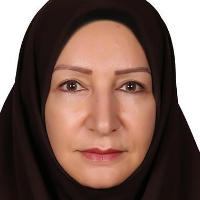Effects of Planting Bed on Vegetative Characteristics and Yield of Satureja sahendica and S. spicigera Species in Rainfed Conditions
One approach for medicinal plants cultivation expansion is to sow them in rainfed areas. In recent years, the study of valuable types of medicinal plants, development of cultivation and meeting the needs of the pharmaceutical industry has been one of the goals of scientific and research centers. Savory is a valuable medicinal species in the world. The aerial parts and volatile constituents of Satureja species are commonly used as a medicinal herb and flavoring agents. They can be used as antioxidant, antiseptic, antispasmolidic and as a condiment in food industry. Two of the most important species of savory grow wildly in Iran are S. sahendica and S. spicigera. Both of them are native species to semi-arid zones of Iran, and considered as aromatic and medicinal plant. Wheat straw and cow manure are the two most common soil amendments which have been using for improving soil structure and soil fertility. Limited studies have been performed on rainfed cultivation of medicinal species, especially savory. This study was conducted to evaluate the effects of planting bed on vegetative characteristics and yield of two savory species in rainfed conditions.
Experiment was carried out for three years (2018-2020) as split plots based on a randomized complete block design with three replications. The experiment was conducted at the Fereidoonshar (32°56’N, 50°06’E and an altitude of 2491 m). Planting bed as main plot consisted of cow manure (30 ton.ha-1), wheat straw (10 ton.ha-1) and control (without manure and straw); species as subplot consisted of S. sahendica and S. spicigera. Morphological traits including plant height, crown diameter, canopy area per plant, canopy area per square meter, and number of stems per plant; and yield traits including total dry weight, leaf dry weight and stem dry weight were thetraits which were measured over the study. The recorded data were subjected to analysis of variance (ANOVA) and least significant difference (LSD) on 0.05 probability level for comparison of means using SAS (ver. 8.2) software.
The results of analysis of variance showed that the effects of planting bed, year and their interactions on the measured traits were significant in many cases. Results showed that the highest values of plant height (46 cm), crown diameter (35 cm), canopy area (3980 cm2) and number of stems per plant (23) were seen in S. spicigera. Also, the highest rates of total dry weight and leaf dry weight were seen in S. spicigera, 695 and 470 kg.ha-1, respectively. Wheat straw treatment reduced aerial parts dry weight in two species in the first year, but in the second year it caused an increase. Cow manure made a slight increase in two species growth only in the first year. The highest values of all measured traits in two species were achieved in the last year of measurements, as the values of leaf dry weight for S. spicigera and S. sahendica were 1018 and 855 kg.ha-1, respectively. The highest values of leaf area index and harvest index were observed in the first year of the experiment including 4.59 and 72, respectively.
Cow manure was able to significantly increase the yield of the two species in the first and second years, especially for S. spicigera. Although the use of wheat straw reduced the rates of morphological and yield treatments of the two species of savory in the first year, but increased them in the second year, so It is recommended to cultivate savory after decomposition of wheat straw. The role of increasing vegetative growth and plant yield under the influence of increasing plant age was quite obvious. On the whole, in order to produce savory under dryland conditions similar to this research, cultivation of S. spicigera withouth usng manure or straw could be recommended, although incorporation of these amendments into the lower depth of the soil could be more effective on this species growth and yield.
- حق عضویت دریافتی صرف حمایت از نشریات عضو و نگهداری، تکمیل و توسعه مگیران میشود.
- پرداخت حق اشتراک و دانلود مقالات اجازه بازنشر آن در سایر رسانههای چاپی و دیجیتال را به کاربر نمیدهد.



